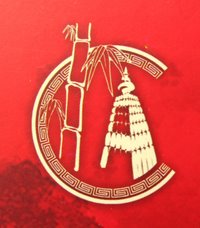Saturday, June 22, 2013
Sunday, June 2, 2013
Little China at Jorasanko
Calcutta , Sunday June 02, 2013 , page 24
Xu Beihong studio recreated at Jorasanko as part of the Tagore and China gallery
Little China in Tagore home
In the run-up to Chinese Premier Li
Keqiang’s visit to India, a permanent exhibition opened at Tagore House
in Jorasanko on Tagore and China. Housed in eight rooms in Ram Bhavan,
on the first floor, the exhibition centres primarily around Rabindranath
Tagore’s first visit to China in 1924.
One of the eye-catching exhibits is the wooden Waterwitch.
Built to order from Dwarkanath Tagore’s Carr Tagore Company in
Kidderpore in 1831, the 363-tonne clipper, used by the East India
Company for carrying opium grown in India to China, sailed from Canton
to Calcutta in 1838 in a record 25 days.
Rabindranath’s
grandfather let out his ships to the Company for opium trade, which he
later became directly involved in. In 1861, a 20-year-old Rabindranath
himself would denounce opium trade in an essay, calling it a business to
kill the Chinese.
“Dwarkanath’s ties with China were
business-related. Tagore fraternised with the people,” pointed out poet
Sankha Ghosh, who was present at the inauguration of the gallery funded
by a grant from the Chinese government. He praised Rabindra Bharati
Museum curator Indrani Ghosh for the research and tasteful display of
information.
When Tagore was
invited to China, collections of his poetry had already been translated
to Chinese. As Rabindra Bharati University vice-chancellor Sabyasachi
Basu Ray Chaudhury mentioned in his address, people knew him as the
author of Gitabitan and Stray Birds. Covers of other works in translation like The Cycle of Spring, dated 1921, are on display in one of the rooms alongside a Tagore special issue of the Chinese magazine, Novel Monthly, that commemorated his visit.
Another reason
endeared Tagore to the Chinese. He was critical of Japan’s invasion of
China in 1938, as revealed in his letters to poet Yone Noguchi, a fact
remembered with gratitude by Chinese consul-general Zhang Li Zhong.
Tagore’s visit
occasioned a flow of students, delegates and scholars to Santiniketan.
We get to know that he named a tea circle on his return after his
interpreter in China, the poet Xu Zhimo. A room has been set up as the
studio of the artist Xu Beihong, who visited Santiniketan. The room also
contains an original letter by the artist (signed as Xu Peon) to
Abanindranath Tagore, which his grandson, the Chinese scholar
Amitendranath, has gifted to the gallery along with some other articles.
The exhibition was
inaugurated by education minister Bratya Basu. Liu Yuening, a professor
of the Central Conservatory of Music, played a Rabindrasangeet on yang
qin, a Chinese dulcimer, at the opening.
Vat a bother
Toong On church at 22 Blackburn
Lane, built in 1924 in what was the Chinatown of old Calcutta, once
housed Nanking Restaurant. It was the best place for Chinese grub, long,
long before chowmein in its various mind-boggling avatars became the
favourite snack of all Indians. The restaurant was run by the Au family
and the property belonged to the trust that was in charge of this place
of worship.
The vat in front of Toong On church in Blackburn Lane
Then sometime in the past, the restaurant
closed and the place fell into disrepute. There was an effort a few
years ago to hand over the building — illegally, no doubt — to a
promoter but the small Chinese community in Calcutta — there are about
1,500 of them in the central areas of this city, 1,500 in Tangra, and
about 1,000 in the rest of the country — resisted, and the church
reopened last year.
Most of the
wonderful antique furniture is gone and so is the old signboard of the
restaurant, but on the first floor, the wooden images of the wargod,
Guan Di, and his two sworn brothers, and an intricately carved wooden
altar remain. A devotee donated a large Buddha statue and it was
installed on the ground floor. Prayers are held here daily.
The lane leading
to the church was always dirty as several families of pavement dwellers
occupied the space, and even worse, at the head of the entrance to the
lane on Lu Shun Sarani (formerly New CIT Road), was a sprawling garbage
dump. Most of the refuse was strewn all over the place than inside it.
The church is a
Grade-I heritage building, according to the Calcutta Municipal
Corporation (CMC), like Victoria Memorial Hall, and no construction can
come up close to it. But in spite of local resistance, the CMC seems to
be bent on shifting the garbage dump from Lu Shun Sarani to the narrow
confines of Blackburn Lane, close to the church.
This new vat at
the other entrance of the lane is far too small for the tonnes of refuse
that are thrown on the main road. But protests notwithstanding, the vat
came up about a year ago, and on April 22, the CMC sent a bulldozer to
start using the smaller vat.
Local people were
up in arms against this and the police had to intervene to maintain
peace. Not just Toong On church, even Masjid Khairul Baqa in the same
neighbourhood is against it. Now the small Chinese community has moved
court and Section 144 CrPc has been imposed around this unique place of
worship. The Chinese have petitioned the West Bengal Minority Commission
as well.
This at a time
when the local Chinese community is trying to revive the old Chinatown
in central Calcutta, and is collaborating with Intach and an
organisation in Singapore to build a museum showcasing Chinese culture
in India inside the church, and turn Blackburn Lane into a pedestrian
plaza where Chinese delicacies will be available.
Subscribe to:
Comments (Atom)




